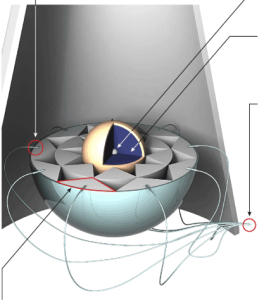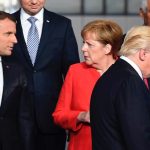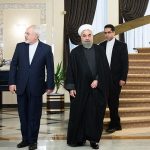by Robert Kelley
A recent piece in The New York Times purports to explain why Iran has not been clear about its nuclear bomb aspirations. The article tries to link this alleged silence to the successful agreements in the P5+1 negotiations that have begun again in Switzerland. However, the article is based on misconceptions, innuendo, and technical ignorance.
The first jolt comes in the second paragraph at the mention of curtailing Iran’s plutonium complex. There is no plutonium complex in Iran. Indeed, there is very little discussion of plutonium at all in the negotiations. The US State Department no less observed in July 2014 that Iran has not constructed a facility capable of reprocessing spent fuel from a nuclear reactor and therefore cannot separate plutonium for a bomb. The International Atomic Energy Agency (IAEA) agrees.
This huge mistake in the second paragraph is only the first of many. Further on, there are errors in most of the so-called questions detailed in the annotation of the bomb drawing, labeled a “typical implosion fission bomb.” If this bomb were truly typical, which it isn’t, it would have been typical in 1945 not in the 21st century.
- The lens design pictured will definitely not work, but that is not important because, according to the IAEA and a leading NGO, Iran would not use lenses but a better scheme it acquired from a foreign consultant.
- That design does not use the detonator arrangement pictured. The authors conveniently report that “detonators can ignite a nuclear blast” but forget to mention that they are sold by the thousands for other uses including conventional explosive weapons. And there is no mention in the Times of exploding bridge wire detonators, which are the sticking point between the IAEA and Iran.
- Iran has been accused of making neutron multiplication calculations. These calculations can also apply to reactors. Without more information we cannot conclude what Iran has allegedly done. In any case, the Nuclear Non-Proliferation Treaty does not prohibit such calculations.
- The Times describes a neutron initiator as a “spark plug.” But that is a totally different concept in a different kind of weapon. In any case, a neutron initiator produces one brief burst of neutrons before it is destroyed and not a series of “bursts.” The Times claims that Iran has never discussed this, but the IAEA reports a satisfactory conclusion on discussions of polonium initiators.
- Iran has clearly explained that their concepts of uranium metallurgy come from unclassified materials that have been in the open literature for many decades. In particular they received an unsolicited document from Pakistan. The IAEA has accepted that answer and is checking with Pakistan. Iran voluntarily gave this document to the IAEA a decade ago, so it cannot be dismissed as never discussed.
- Iran is accused of studying “long distance firing.” But the idea that Iran is sending high-voltage pulses to ignite detonators 10 kilometers away is a complete misconception.
- The Times alleges that Iran has tested mock core components in high explosive experiments. The IAEA has said that these components are made of high-density materials such as tungsten – which would be an extremely poor choice for such experiments and very expensive. The allegation itself smacks of poor science and engineering.
Iran was clearly considering many nuclear options, particularly in the 1980s and 1990s when Saddam Hussein in neighboring Iraq was pursuing nuclear arms aggressively. Iran had to have been aware of this. Procurement information obtained by the Washington group ISIS is a nearly exact match to Saddam’s efforts. The clandestine construction of both a huge enrichment plant at Natanz, sized for weapons but too small for a power industry, and a heavy water reactor at Arak indicate nuclear ambitions in those years. But the United States believes the weapons program stopped in 2003. If Iran could just admit to what they have done and when and why they stopped it would clear the air.
The Times claims that the IAEA has 12 sharp questions of which only one has been answered. Yet the Times has ignored that Iran has answered questions about weapons such as its work with polonium, its procurement of computer codes, uranium metallurgy, contamination in a university lab, and a number of other topics. The IAEA published a number of statements about its satisfaction with answers provided by Iran. And it has also expressed frustration with lack of progress in other areas. These IAEA statements can be seen in places like the Arms Control Association. But the Times is very selective in what it reports.
Does it matter? Yes. Julian Pecquet writing in Al Monitor has already repeated the exact same claim regarding the “eleven unanswered questions” without proof. Sloppy research leads to repetition and soon becomes “fact.”
Iran has consistently responded that it cannot answer many questions because they are based on untrue information. Do we have to assume Iran is automatically lying when it says it is falsely accused? There are a number of well-documented cases of forged documents given to the IAEA to implicate Iraq in undisclosed activities. After US revelations of the deliberate forgery of nuclear weapon device plans, given clandestinely to Iran to impede its alleged program, isn’t it just possible that one or more of the allegations against Iran were fabricated as well?
In any case, the depth of thinking behind the Times article is summed up near its conclusion:
Iran already knows how to make a rudimentary bomb. So do terrorists and college students. The real question is whether Iran can miniaturize a weapon to fit atop a missile…
The threat posed by Iran to the West is equal to the threat posed by college students? Both know how to make a rudimentary bomb. That is the position of the Times. For some days now, American audiences have been treated to a television ad showing a white panel truck carrying an Iranian nuclear bomb blowing up in a parking garage in downtown New York City. This bomb didn’t need to be miniaturized to fit on a missile. And, as the Times tells us, college students can do it too.
The Times article purports to be a summary of weaponization issues, but it appears more likely that political biases trumped technical accuracy.







The times must have gotten the story/drawing from Netanyahoo when he visited last time. Like his Red ling drawing, his constant Iran is the boogeyman. Bought and paid for, like the U.S.Congress. So goes the Grey Lady, another has been.
The same paper that breathsaly got us into and lied about the Iraq War. A waste of the Times
Thank you for this examination of a typically wrong NYTimes/WaPo – type article which is no doubt the result of a memo from State to “do something on Iran” to help the cause, which is regime change. (Not that it is a “regime” any more than many other governments are but that’s the popular phrase.) –But those “neutron multiplication calculations” still worry me. (snark)
These kinds of propaganda reports have been handed off by Israel to the MEK (Mojahedeen-e-Khalgh) a known Iranian terrorist group that opposes the current regime in Iran for so many years. The MEK group were housed by Sadam Hossein in Baghdad for many years and they were being used as their pawns. This also indicate the Israel was close to this terrorist group making Israel complicit with Sadam’s war against Iran from 1980-1988. The MEK sells these false reports to the highest bidder in order to support themselves financially. This is also the terrorist group which was recently dropped of the terrorist groups by the republicans in the House in support of Natanyahou! Go figure!
The MEK also had (has) close ties with the US, including members of Congress. I recall at least one MEK rally in the Paris environs which was well-attended by expense-paid American VIPs.
There is simply no down side in the US concerning enmity toward Iran, and considerable profit possible.